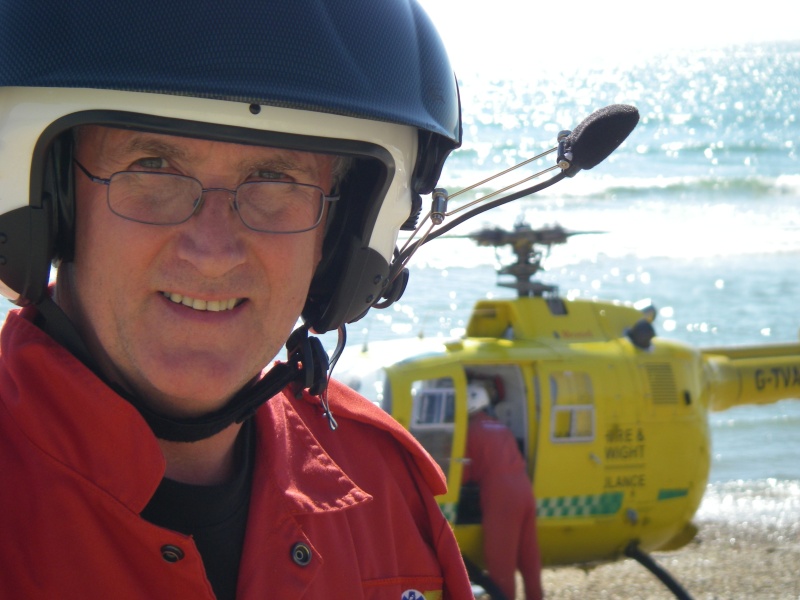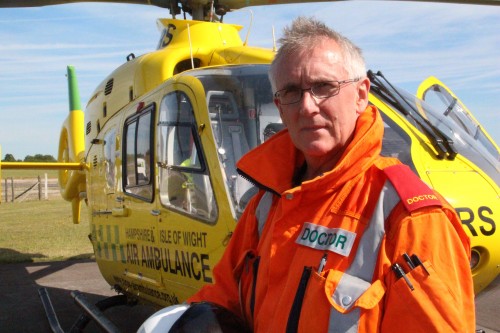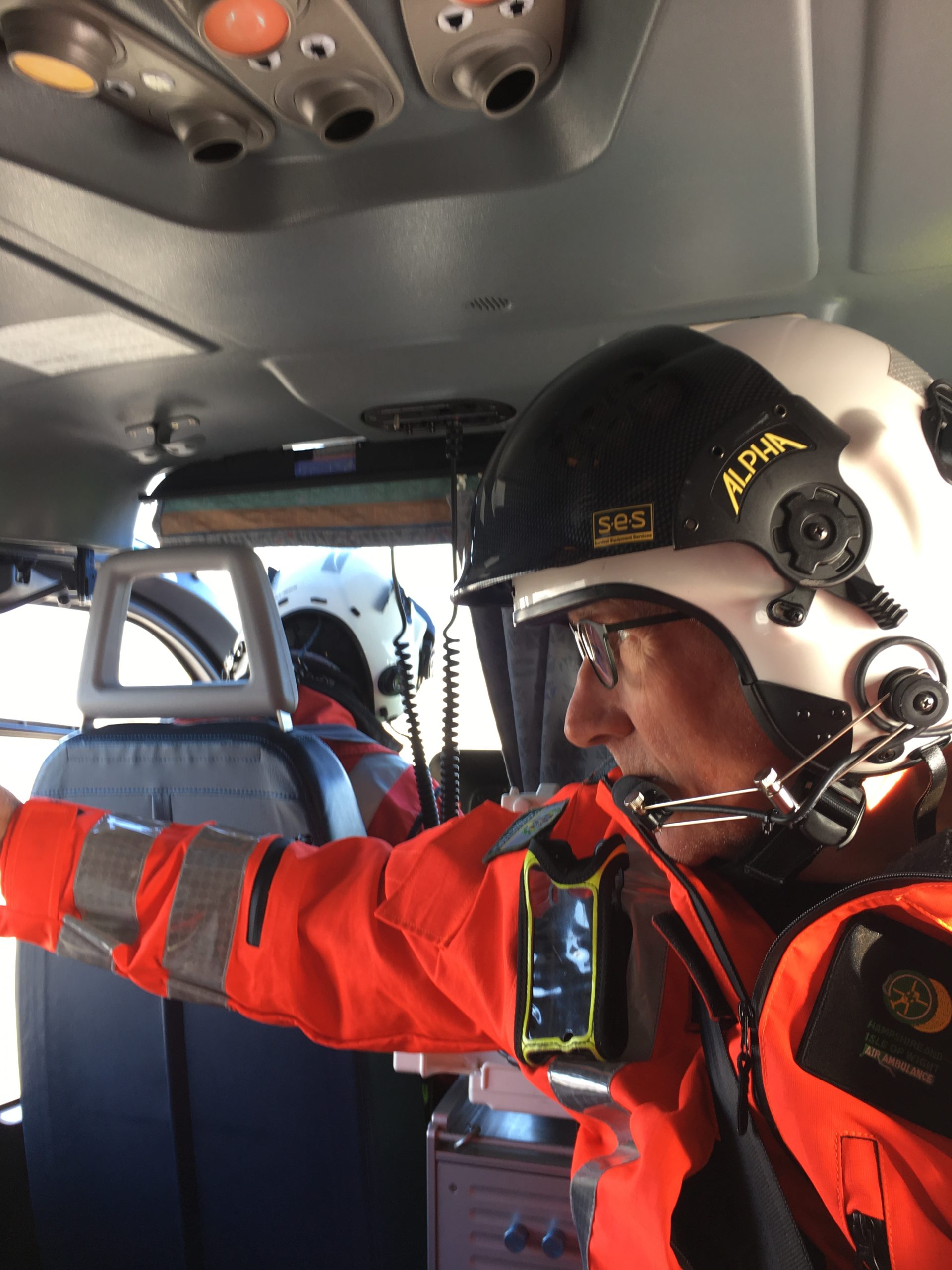Friday July 1 2022 marks 15 years since we took off on our first mission. Thanks to your support, we have since responded to over 15,000 emergency call-outs.
Here from, almost, the very beginning, was Dr David Sutton, a consultant anaesthetist and helicopter emergency medical service (HEMS) doctor, who has seen just about every incident and injury imaginable. We chat to Dr Sutton, who recently hung up his flight suit for one last time, about his 15 years on the front line.
The Early Days

“We used to have volunteer doctors flying in their own time, but we couldn’t provide cover all the time. The charity had a landing site surveyed next to my house on the Wiltshire border, just a few minutes flying time from Thruxton. So the team could come and pick me up for complex incidents that required critical care.
“I think this makes me the only doctor to have been picked up for work and flown home by helicopter.”
Why HEMS?
“According to a 1988 Royal college of Surgeons report, 50% of trauma deaths occur before the patient arrives at hospital. It was obvious to me, and similarly committed colleagues, that it was irrational for expert, critical care to start only when the patient reached hospital.
“I joined British Association for Immediate Care (BASICS) as a volunteer in the early 90s, to provide critical care support to the ambulance service.
“I was also experienced in international air ambulance work – one of my last jobs was going to Iraq with Richard Branson to rescue the First Gulf War hostages.
“Joining the charity from the outset in 2007 was a logical extension of this work. And I consider myself to have been very lucky to have had the opportunity to fly as a HEMS doctor at a relatively late stage of my career.”
Any Memorable Missions?

Tesco Crash
“We flew to Tesco in Andover, where a Rolls Royce had driven through the wall and into the checkouts, bowling over six shoppers. We were the first medical resource on scene and could see from the air a large hole in the wall with smoke billowing out and a Rolls Royce embedded in the checkouts.
“My paramedic colleague and I managed this as a major incident, creating a triage bay in the supermarket canteen and prioritising the casualties for evacuation as the ambulances arrived. Luckily, there were no deaths or life-changing injuries.”
From Doctor to Patient
“We had flown to a road traffic collision where an elderly woman had ‘T-boned’ a car at a junction. She had been helped out of the car and sat on a chair in a pub car park, where I went to assess her.
“I knelt down on one knee and started to take a history from her. Suddenly, I felt a car drive over my leg, twisting it and shattering the bone into three pieces. I was off the air ambulance for six months.”
Performing Open Heart Surgery
“If a casualty has been stabbed in the heart, the sack (pericardium) surrounding the heart rapidly fills with blood and squeezes the heart until it can no longer pump blood, resulting in a cardiac arrest. If this sack full of blood can be drained within 10 minutes, it is possible for the casualty to be resuscitated, but it is very much a last-ditch endeavour.
“I have done this twice: most recently in a patient stabbed in the left side of his heart. My paramedic colleague Mike and I simultaneously opened the casualty’s chest on the landing of the house, exposed the heart, emptied the pericardium full of blood and found a single hole in the left ventricle. I then blocked the hole whilst Mike transfused blood. Unfortunately, however, this casualty’s injuries were unsurvivable.”

UHS Helipad
“Prior to 2012, Helimed 56 (and other air ambulances) flying in to UHS had to land on a playing field in Lordshill. This was very unsatisfactory, as we then needed a road ambulance to meet us and convey the patient to hospital.
“My colleague Charles Deakin and I argued for a helipad over a period of 12 years. And, in 2009, we were fortunate to be the first recipients of an £850,000 funding grant from the HELP charity – a contact I was only able to make through working with HIOWAA.
“In 2012, the helipad opened. I was the Helimed 56 doctor for the first flight direct to UHS and was the first person to step out onto the helipad, with hospital staff and press on the roof watching. It was a very emotional moment, after 15 years of cajoling and persuasion from Charles and me.”
Support from the Public
“Quite simply, we would not have the service we do without the amazing support from the public.
“On a personal level, the very touching letters and social media posts that we regularly receive really brings home the message that the crew are saving lives 365 days a year – something that we could not do without the support of the public.”
Thank you for changing and saving lives in our region.








